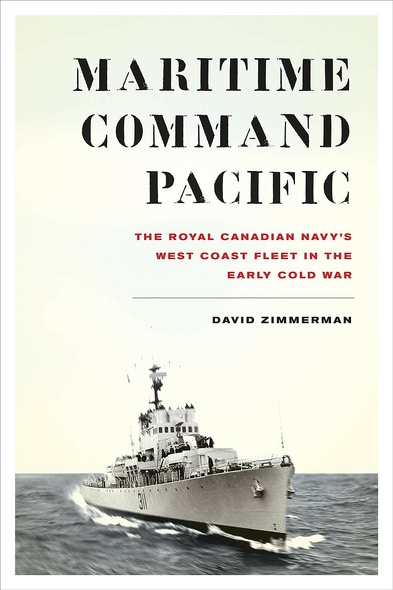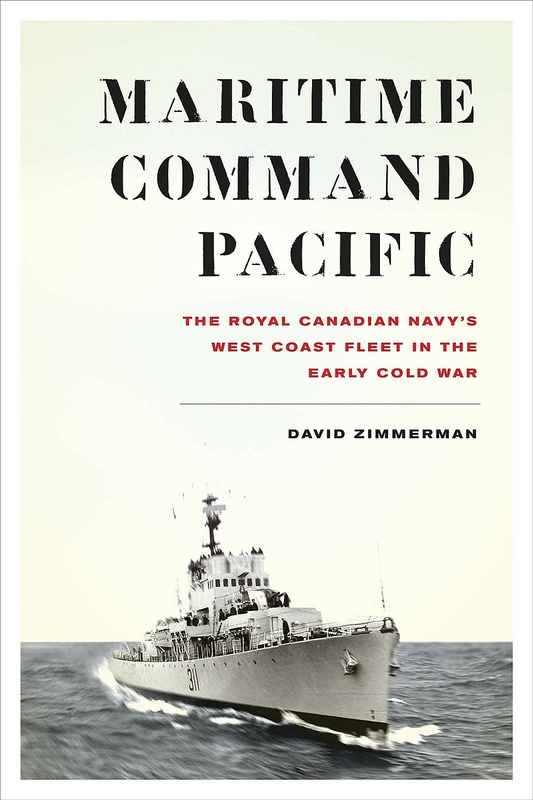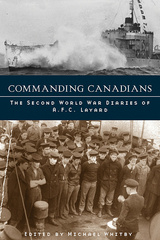
Maritime Command Pacific
The Royal Canadian Navy’s West Coast Fleet in the Early Cold War
The Royal Canadian Navy crews that sailed the Atlantic during the early Cold War held a contemptuous view of their West Coast brethren, likening the Pacific fleet to a “yacht club” where sailors enjoyed a life of leisurely service on a tranquil sea. As Maritime Command Pacific demonstrates, nothing could be further from the truth. The first comprehensive history of the Pacific fleet from 1945 to 1965, it begins by exploring how Maritime Command Pacific (MARCAP) weathered postwar downsizing only to face rapid expansion in the wake of the Korean War. As Cold War tensions mounted, defense planning evolved, leading to joint US-Canadian naval operations and the development of the ALCANUS accord to protect the west coast of Alaska, Canada, and United States. David Zimmerman animates the lives of the men who served during this twenty-year period, recounting how they contended with drifting Japanese mines, joint US-Canadian training exercises, and the threat of Soviet submarines – all while patrolling a rugged coastline known, in part, as the “Graveyard of the Pacific.” Along the way, he establishes that the Pacific fleet was definitely not a yacht club.
As the first comprehensive account of Canada’s maritime defense of the West Coast during the early Cold War, this book will appeal to anyone interested in the history of the Royal Canadian Navy, maritime air forces, and Canadian defence policy during this period. It will also prove invaluable to those interested in Canadian-American defence relations, including political scientists and scholars interested in strategic studies, security studies, and international relations.
Any scholar of Cold War naval policy will benefit from reading this book. David Zimmerman sets out to correct the absence of works on the Canadian West Coast Fleet. … The book is superbly organized … [and] serves as an excellent example of examining all elements of a navy and not simply the fleet and strategy. Additionally, the book is a welcome break from the U.S.-centric perspective.
A ‘must-have’ for anyone interested in Canada and the early Cold War. Zimmerman’s readable history – based on newly opened, rich archival materials – illuminates the hitherto unknown development of Canada’s West Coast navy. The coverage is wide-ranging, beginning with the demobilization challenges at the end of the Second World War through to the navy’s early 1960’s expansion when it would achieve its greatest peacetime strength.
In Maritime Command Pacific, Zimmerman skilfully proves his main contention – that Canada’s West Coast fleet did not operate merely as an agreeable ‘yacht club’ during the early years of the Cold War. In correcting this significant fallacy in the received history of the Royal Canadian Navy, he enhances our understanding of the RCN as a whole
David Zimmerman is a professor of military history at the University of Victoria. His books include The Great Naval Battle of Ottawa, Top Secret Exchange: The Tizard Mission and the Scientific War, and Britain’s Shield: Radar and the Defeat of the Luftwaffe. He is an expert on the history of anti-submarine warfare, radar, the Royal Canadian Navy, science and technology in war, and the rescue of academic refugees from Germany in the 1930s.
Introduction
1 The Legacy of War and Demobilization
2 From Peace to Cold War, 1945-50
3 Defending the West Coast in the Nuclear Age
Cold War Expansion
5 Reorganization of Pacific Command and West Coast Defence Planning, 1958-61
6 The Golden Age
7 The Cold War on the Pacific Coast, 1958-65
Conclusion; Notes on Sources; Notes; Index








